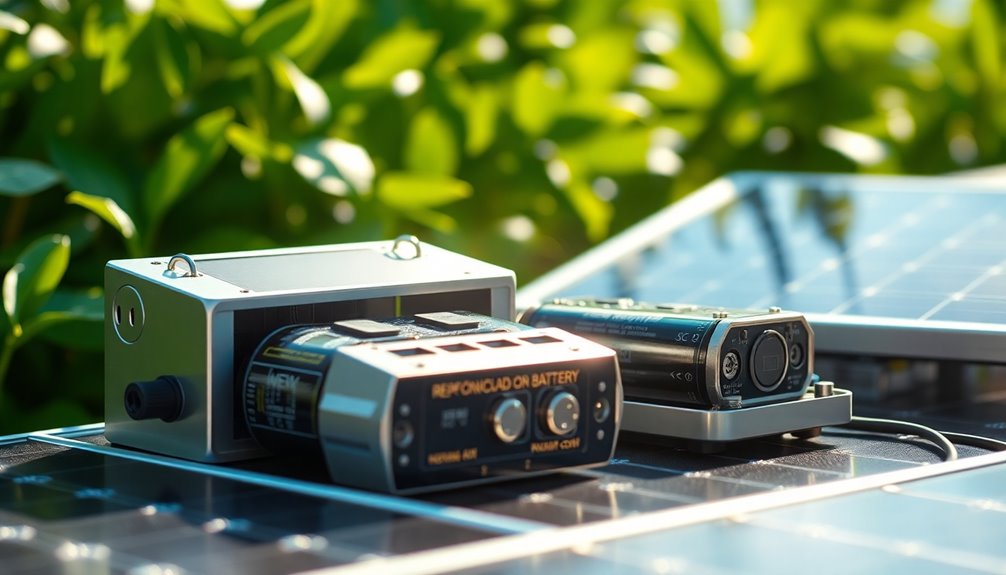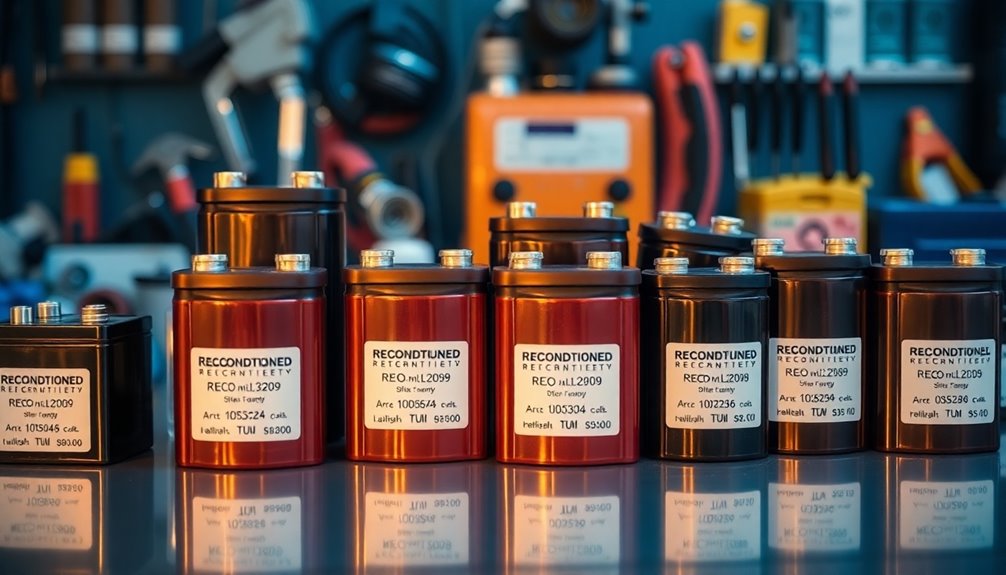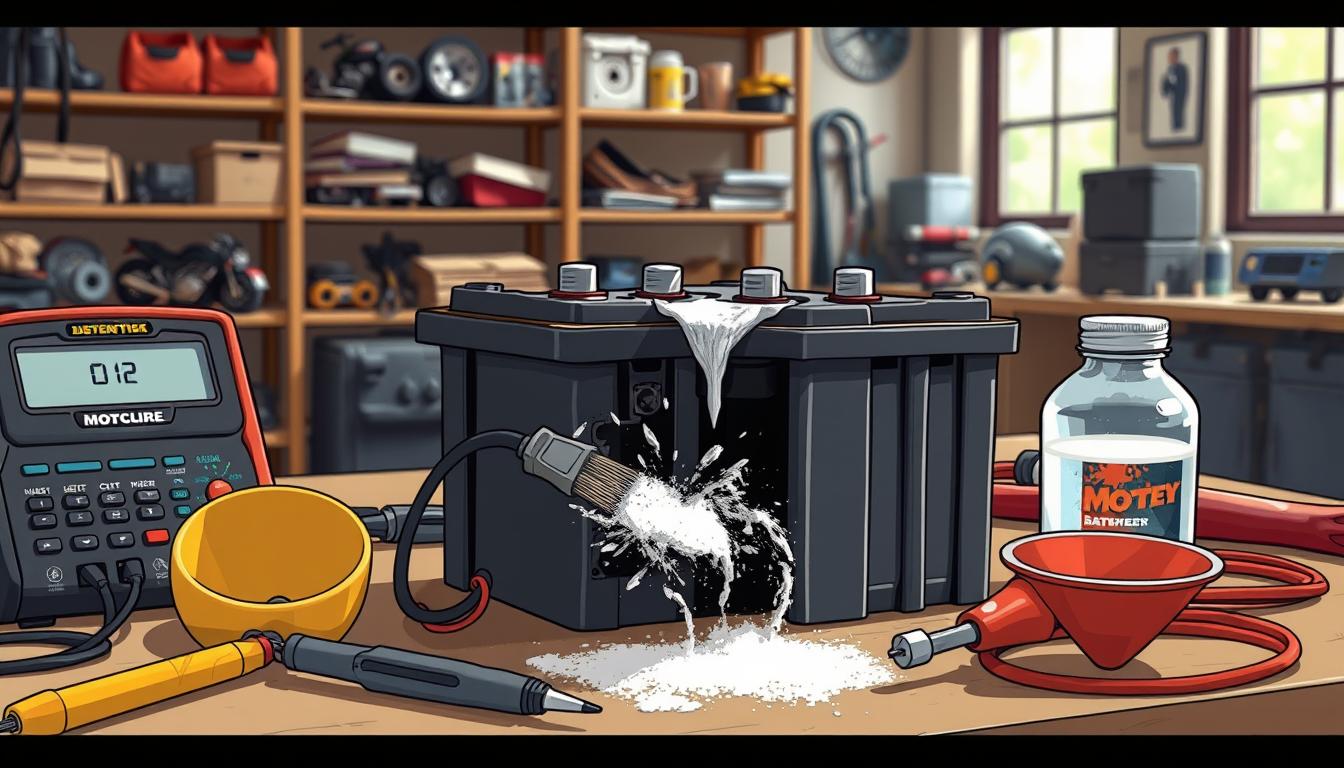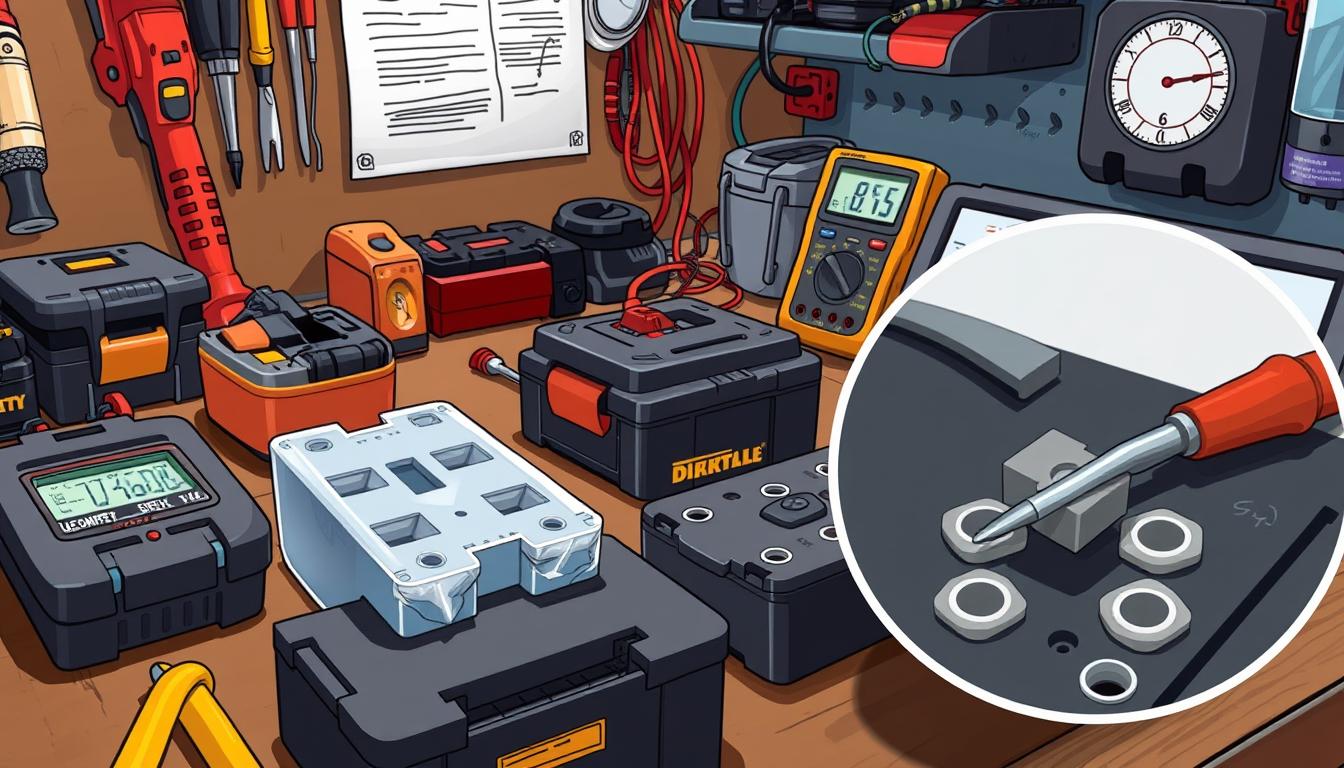Solar-powered chargers for reconditioned batteries provide a reliable and eco-friendly way to keep your batteries functioning optimally. These chargers, designed for various battery types, utilize solar energy to extend battery life and enhance performance. With features like charge indicators and weather-proof designs, they're perfect for outdoor use or as backup power sources at home. Regular maintenance and proper charging techniques can significantly boost battery longevity. Plus, integrating solar chargers into your energy management system can lower your electricity costs. If you're curious about the best types and practices for using these chargers, there's much more to discover.
Key Takeaways
- Solar battery chargers are specifically designed to recharge various battery types, including reconditioned batteries like Ni-MH and lead-acid.
- Integrated solar chargers can seamlessly charge reconditioned batteries in vehicles or portable devices, enhancing convenience and functionality.
- Charge controllers, such as MPPT, optimize charging efficiency for reconditioned batteries, preventing overcharging and extending battery life.
- Regular performance testing and proper maintenance of reconditioned batteries ensure optimal charging and longevity when using solar-powered chargers.
- Utilizing solar-powered chargers promotes energy independence and reduces reliance on fossil fuels, aligning with sustainable practices.
Types of Solar-Powered Chargers
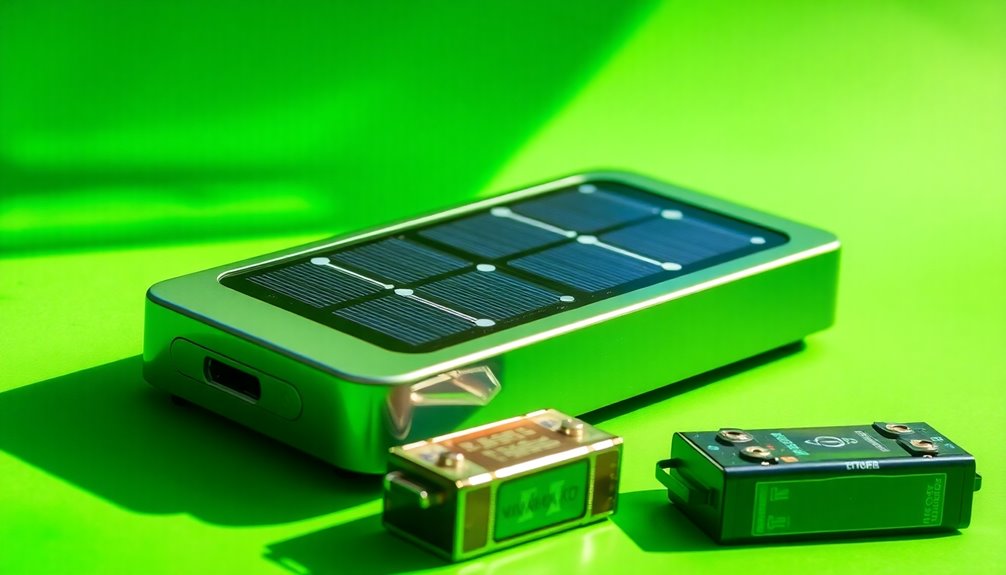
When it comes to solar-powered chargers, you have several options to suit your specific needs.
If you're often on the go, portable solar chargers are a great choice. They're designed for mobility and outdoor use, using thin-film photovoltaics that allow for flexibility. You can easily mount these chargers on your backpack or vehicle, making them perfect for activities like sea kayaking or mountain touring. Solar batteries store the energy generated by these chargers for later use, providing you with power even when the sun isn't shining.
If you need to charge specific battery types, solar battery chargers are available for Ni-MH, Ni-CAD, and lead-acid batteries, among others. Some are specifically designed for car batteries, and they often come with charge indicators and weather-proof enclosures.
For those looking to optimize their solar setup, solar charge controllers can enhance efficiency. You'll find two main types: PWM controllers for smaller systems and MPPT controllers that can provide up to 30% more power.
Finally, integrated solar chargers fit seamlessly into products like cars and backpacks, enabling you to recharge various devices, including laptops and cell phones. These options utilize different photovoltaic materials, catering to a wide range of needs.
Quality and Inspection Standards
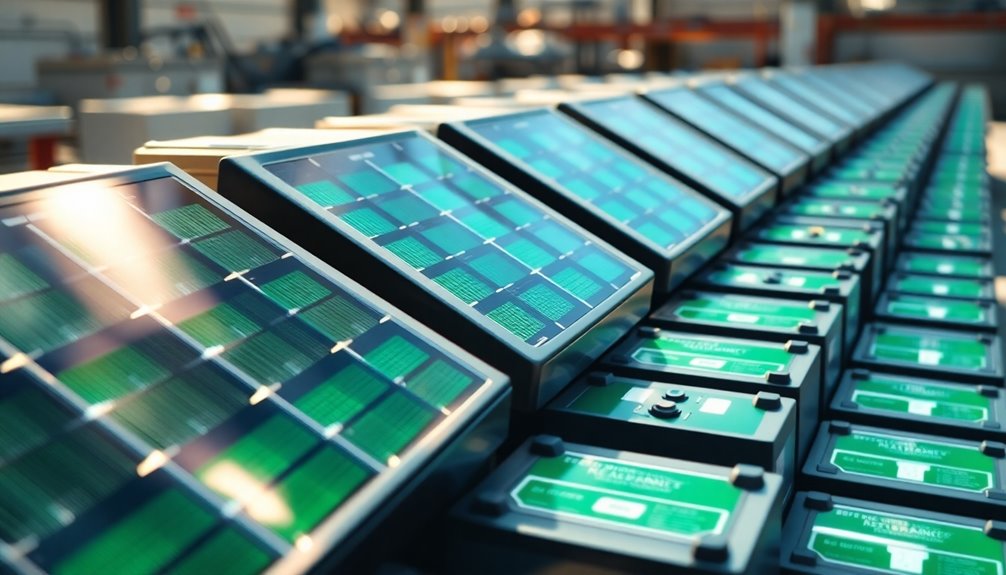
Quality and inspection standards are crucial for ensuring the safety and performance of reconditioned solar batteries. When you're dealing with hybrid batteries operating at high voltages, following strict safety protocols during the remanufacturing process is essential to protect both employees and customers.
These solar batteries need specific charging profiles to prevent overcharging or undercharging, which can pose significant safety hazards. Using a regular battery charger is a no-go; it can lead to improper voltage levels. For instance, during the bulk charging phase, the voltage increases to approximately 14.5 volts for nominal 12-volt batteries, which is crucial for rapid recharging.
To guarantee reliability, remanufactured batteries undergo rigorous performance testing. Each cell within the battery pack is tested for balanced performance, ensuring the entire unit operates efficiently.
Solar charge controllers play a key role in this process by applying various charging stages to optimize battery performance and prevent damage.
Quality control measures include thorough inspections to meet high standards, along with advanced analytical techniques to detect impurities. Faulty cells and components are replaced with high-quality parts, ensuring the battery can withstand daily use.
With robust warranties provided, you can feel confident in the longevity and performance of your reconditioned solar batteries.
Applications and Uses
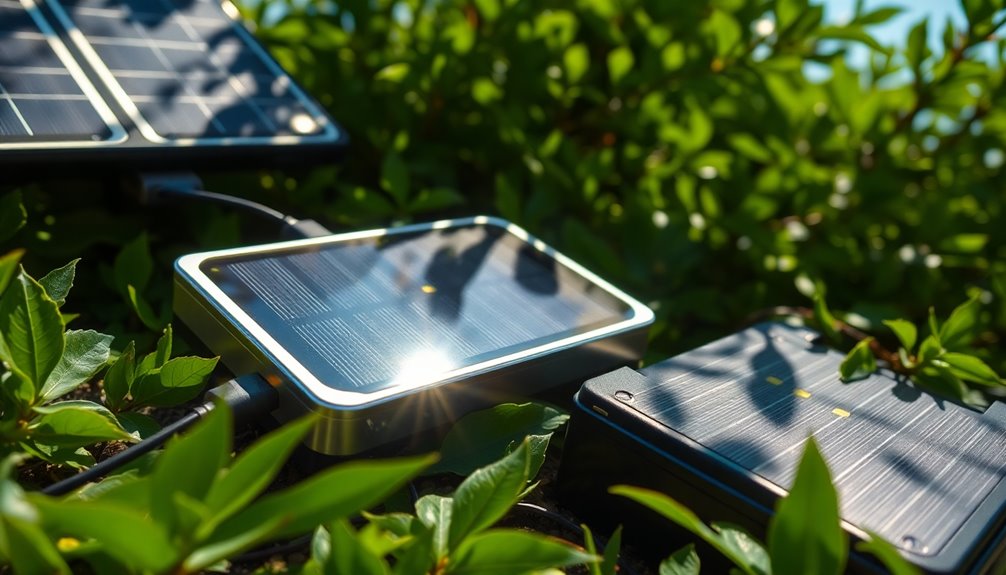
Reconditioned solar batteries find a variety of applications across different environments, making them a versatile choice for energy solutions.
If you're an outdoor enthusiast, these batteries can power your devices in remote areas where conventional electricity isn't available. They're perfect for camping trips, mobile charging stations, or temporary setups at events. You can easily transport them for vacations or extended excursions, providing essential off-grid power. Additionally, their eco-friendly energy source supports sustainable practices while enjoying nature.
In vehicles and marine settings, reconditioned solar batteries are designed to charge your car, boat, or RV batteries, offering electrical independence. They maximize battery life with programmable charge rates, ensuring your adventures remain uninterrupted.
At home, these batteries serve as reliable backup power sources during outages, allowing you to maintain daily functions seamlessly.
Integrating them into your home energy management system can help optimize energy usage and reduce electricity bills, all while generating clean energy and lowering your carbon footprint.
Design and Key Components

Designing a solar charger for reconditioned batteries involves careful consideration of several key components and features. First, you'll want to select solar panels rated at 4 Volts or above to ensure they provide sufficient power output. A waterproof container is crucial to protect your components from environmental elements, enhancing the charger's durability.
Compactness is another important design factor; aim for a portable unit that can be easily transported for various applications. To make assembly straightforward, keep the design simple, allowing you to put it together in about 20-30 minutes with minimal tools. Additionally, this project is suitable for educational purposes and can foster hands-on learning.
Don't forget to incorporate safety measures—wear safety goggles and use proper soldering techniques to prevent injuries.
Key components include solar panels, a battery holder compatible with AA or AAA batteries, and a blocking diode to prevent backflow of current when it's dark. While a charge controller isn't mandatory, it can help regulate charging and prevent overcharging.
Effective wiring and soldering are essential for a secure connection between components. Lastly, consider using recycled materials to promote sustainability in your design.
Benefits of Solar Chargers
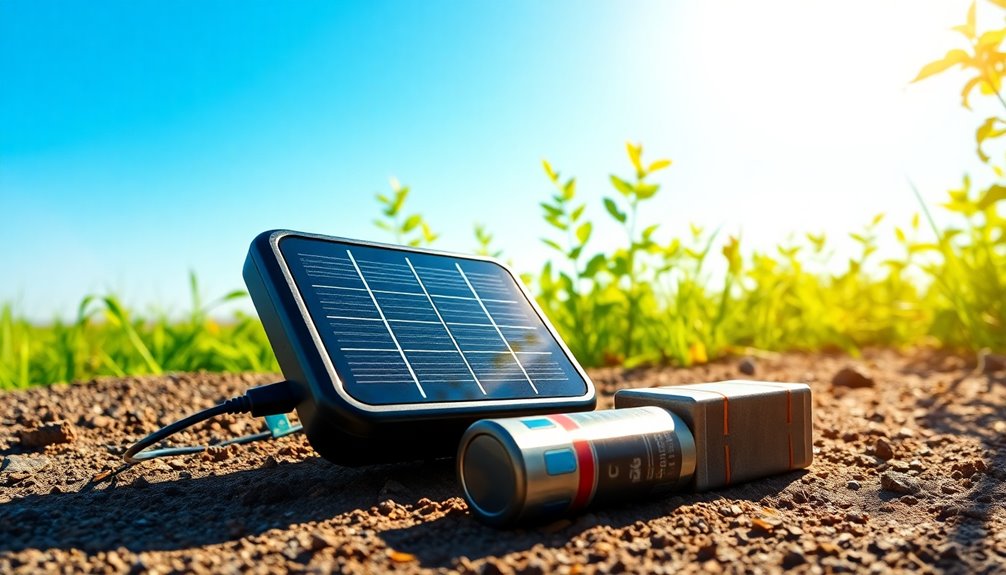
Solar chargers offer numerous benefits that make them an attractive choice for anyone looking to harness renewable energy. First, they significantly reduce your reliance on fossil fuels, helping to lower greenhouse gas emissions and air pollution. By using a clean, renewable energy source, you contribute to environmental sustainability, lower your carbon footprint, and save precious natural resources.
Economically, while the initial investment might be higher, you'll enjoy substantial long-term savings on electricity costs. You can drastically cut down or even eliminate your electricity bills for charging devices and batteries. Additionally, solar chargers can be used to charge a variety of battery types, making them versatile for many applications.
Plus, solar chargers extend battery life by keeping them charged, reducing the frequency of costly replacements.
Energy independence is another key advantage. With solar chargers, you can power your devices anywhere there's sunlight, making them perfect for outdoor adventures or emergencies. They provide a reliable backup during power outages, ensuring you stay connected when it matters most.
Lastly, their compact and portable designs make them convenient for various uses, from charging essential devices during an emergency to powering your recreational vehicles.
Embracing solar chargers is a step toward sustainable living and preparedness.
Maintenance and Longevity Tips
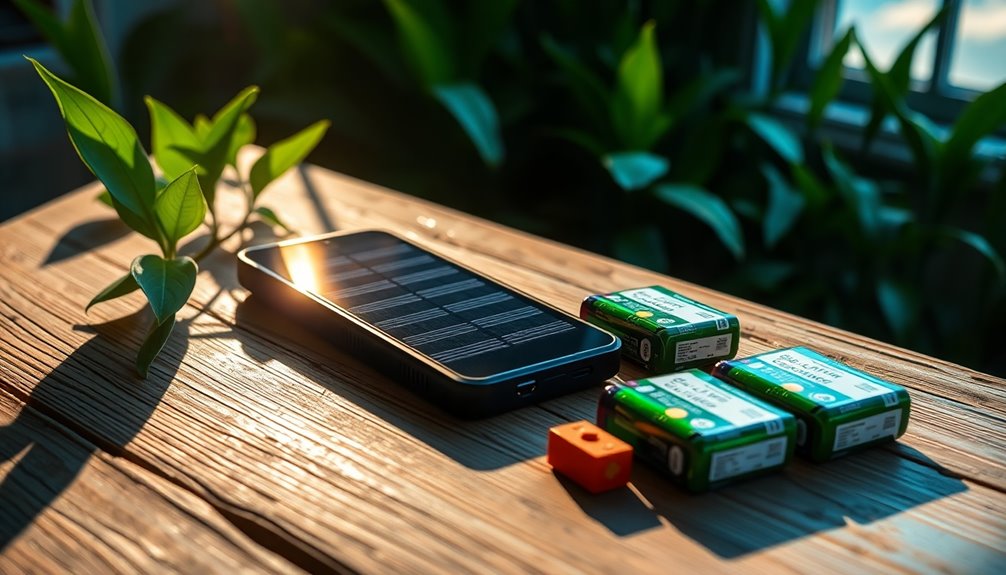
To keep your batteries in top condition and extend their lifespan, it's essential to establish a regular maintenance routine. Start by cleaning the battery terminals regularly with a mixture of baking soda and water to remove any corrosion and buildup. Make it a habit to bring your batteries to a full state-of-charge at least every three weeks to minimize internal corrosion.
Next, check the water levels in your batteries every six to twelve months, ensuring the plates are fully submerged. Don't forget to perform equalization by overcharging the battery occasionally; this helps break down sulfate crystals and can restore capacity. Monitor the voltage levels and charge capacity to catch potential issues early.
Be vigilant for common issues like sulfation or physical damage, as accurate diagnosis is crucial for effective repair. If you find damaged cells, follow the manufacturer's instructions to replace them. Address any physical damage promptly to prevent further decline in performance.
Lastly, use appropriate charging methods to avoid overcharging, which can be detrimental. By following these tips, you'll maximize the longevity of your solar-powered chargers and keep your reconditioned batteries performing optimally for years to come.
Frequently Asked Questions
How Long Does It Take to Fully Charge a Reconditioned Battery?
When you charge a reconditioned battery, the time it takes to reach full capacity can vary.
Factors like battery type, age, and the charger used play a huge role. Generally, it might take anywhere from 6 to 12 hours for a complete charge.
If you're using a fast charger, you could reduce that time significantly. Just keep an eye on the temperature, as extreme conditions can impact the charging speed.
Can Solar Chargers Work on Cloudy Days?
Yes, solar chargers can work on cloudy days, but their efficiency drops.
When it's lightly cloudy, they can produce around 76% of their maximum output, while heavy clouds can reduce that to about 33%.
You might notice longer charging times, so be prepared for that.
Despite the lower performance, they still capture some sunlight, making them a viable option even when the sun isn't shining brightly.
Are There Specific Brands Recommended for Solar-Powered Chargers?
Yes, there are specific brands you can trust for solar-powered chargers. Brands like BigBlue and Jackery are highly recommended for their portability and reliable performance.
BigBlue's SolarPowa 28 is great for various conditions, while Jackery's SolarSaga 100 is user-friendly and lightweight. Both are perfect for outdoor adventures.
When choosing, consider your needs and the type of devices you'll be charging to ensure you get the best fit for your lifestyle.
What Is the Warranty Period for Reconditioned Batteries?
The warranty period for reconditioned batteries usually ranges from 12 to 36 months, depending on the battery's quality.
You'll often find a 12 Month/15,000 Mile warranty for high-grade remanufactured cells, while some offer longer warranties like 36 Month/45,000 Mile for batteries with new components.
Be sure to check the warranty details, as they typically cover defects but might exclude labor and shipping costs.
How Do I Store Solar Chargers When Not in Use?
When you're storing solar chargers, make sure to keep them in a cool, dry place, away from direct sunlight and moisture.
Secure them in a position that prevents bending or flexing.
It's a good idea to clean them before storage to ensure they're ready for use later.
If possible, use their original packaging for protection and label them for easy identification.
This will help maintain their efficiency and prolong their lifespan.
Conclusion
Incorporating solar-powered chargers for reconditioned batteries is a smart choice for both the environment and your wallet. With various types available, you can easily find one that fits your needs. Prioritizing quality and understanding the design can maximize performance and longevity. Plus, the benefits you gain—like sustainability and cost savings—make it all worthwhile. By following maintenance tips, you'll ensure your solar charger serves you well for years to come. Embrace the power of the sun!

